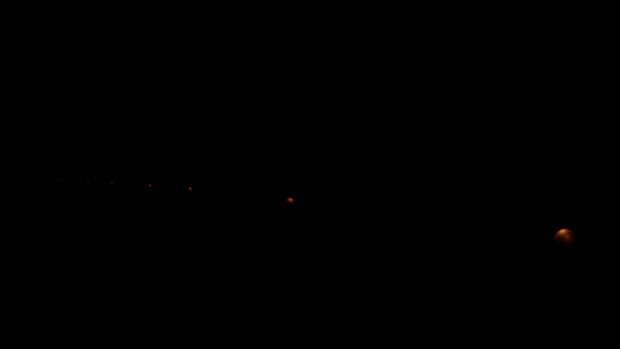01.03.23: Difference between revisions
No edit summary |
No edit summary |
||
| Line 53: | Line 53: | ||
# Comes back around. | # Comes back around. | ||
# Swings back around again and then there is the infinity.<br /> | # Swings back around again and then there is the infinity.<br /> | ||
[[File:01.03.23 (2).mp4|thumb|01.03.23 (2)]] | [[File:01.03.23 (2).mp4|thumb|01.03.23 (2)|frameless|620x620px]] | ||
Revision as of 16:45, 1 March 2023
Recreate an analogy used by an expert in their field using Blender. The analogy should be an attempt to explain something complex in layman terms. Try as hard as possible to stick to the analogy exactly.
Questions: how to reopen the project? which part to start with...I'll start by designing a new animation for the beginning. Been listening to podcasts about black holes, how could I use this scientific knowledge, to inspire the WAY I make the animation? Take a few concepts, and use those as the beginning.
- A new NASA animation shows what you’d see if you were hanging out near a black hole.
- The black hole’s strong gravity would distort your view: From the side, the outer ring, known as the accretion disk, would appear to bend around a dark abyss. It would also be brighter on one side than the other.
- But if you were to look at the black hole from up above, the ring would form a near-perfect circle and the light would appear more evenly distributed.
- This creates a kind of fun-house mirror effect in which your vantage point changes your view.
What have I done so far?
- researched how they create accurate animations for black holes, found this software: https://matlab.mathworks.com/and signed up, we have access to it.
- it looks like it would take me at least a couple of days to get my head around and my time span is 1 day.
- perhaps it is better to look at processes and/or descriptions - could I use this
"NASA compares this stretching, twisting, bending journey of light to a carnival mirror." (https://www.businessinsider.nl/nasa-black-hole-animation-gravity-distorts-vision-2019-9?international=true&r=US).
Perhaps I could, create mirrored effects in Blender and look at the outcome. Conceptually interesting, to take an analogy which is used by scientists to speak to layman and make a physical model of the analogy...more on this.
"With an image of a second ring, they can compare the black hole at two different periods of time. Each ring is like a mirror image of the black hole at different points in its history, not unlike the rings of a tree. So, like the infinite reflections of a person surrounded in mirrors, the stacked images provide enough data to learn the black hole’s essential properties: mass and spin." (https://news.harvard.edu/gazette/story/2020/04/black-hole-imaging/)
"A black hole is a mirror. The way its a mirror is, if light (a photon) bounces off your face towards the black hole, it goes straight to the black hole and just falls in - you never see it again. But, if it just misses the black hole it'll swing around the back and come back to you, and you see yourself from the photon that went around the back of a black hole. But not only can that happen, the photon can swing around twice and come back, so you actually see an infinite amount of copies of yourself." (https://www.youtube.com/watch?v=y3cw_9ELpQw)
-
Another interesting one:
Black Hole Entropy and Soft Hair (name of Andrew Strominger et al's paper)
PROTOTYPE PLAN
Recreate an analogy used by an expert in their field in Blender. The analogy should be an attempt to explain something complex in layman terms. Try as hard as possible to stick to the analogy exactly.
The analogy: the infinite mirror/carnival mirror to describe black holes
- create the mirror effect in Blender
- attempt to recreate, or mirror (no pun intended) the animation that is made by the scientists.
RESULTS
This was me figuring out how to create the infinity effect. Now, I return to the analogy. I realise, that the POV should be the 'photon'. We need to see the photon miss the mirror, and then 'go into' and then back around, it is the second loop that gives the infinity effect. So:
POV - photon
- Misses the mirror.
- Goes into the mirror
- Comes back around.
- Swings back around again and then there is the infinity.
FINDINGS

